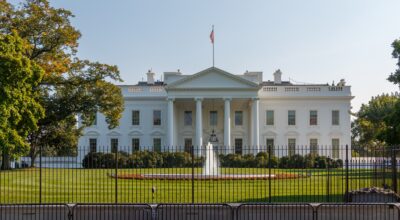
Primer: It’s Time for a Negotiated Settlement for Ukraine

“Just like in the first world war we have reached the level of technology that puts us into a stalemate,” Ukraine’s commander in chief General Valery Zaluzhny recently admitted in an interview with the Economist, adding that “there will most likely be no deep and beautiful breakthrough.” He was immediately publicly rebuked by Ukrainian President Volodymyr Zelensky who, according to a recent Time magazine profile, is acting increasingly messianic, volatile, and delusional. Time reports that Zelensky refuses to listen to his own battlefield commanders, and remains opposed to a negotiated settlement, regardless of whether the war bleeds his country dry.
All this could have been avoided, if not for Ukrainian maximalism and the myopia of the national security establishment in Washington, D.C. Now at this late hour, the American security establishment increasingly admits that the war is a stalemate, too, as a recent NBC report outlined, and tacitly accepts the fact that Zelensky and top Ukrainian leadership—not just Vladmir Putin—are a hindrance to a diplomatic resolution of the war.
Ukraine refused to negotiate from a position of strength last year, even publicly opposing American advisors. But Ukrainians never had the requisite manpower to match Russian “escalation dominance,” as international relations scholar John Mearsheimer has noted, and without direct NATO support it was only a matter of time that the war would have turned against them. The recent Time essay quotes senior Ukrainian military commanders echoing Mearsheimer’s observation:
“They don’t have the men or the weapons,” says the officer. “Where are the weapons? Where is the artillery? Where are the new recruits?” In some branches of the military, the shortage of personnel has become even more dire than the deficit in arms and ammunition. One of Zelensky’s close aides tells me that even if the U.S. and its allies come through with all the weapons they have pledged, “we don’t have the men to use them.”
Without a path to victory for Ukraine, the only realistic way forward to peace in Europe is a negotiated settlement.
Consider America’s Real Interests
Going forward, there are two core questions at issue for US interests: First, how to maintain the historic American dual interest of avoiding nuclear war in Europe while opposing a hegemonic great power? Secondly, how much is the US willing to subsidize European powers towards achieving that aim?
The answer to the first concern is obvious. As the Ukrainian stalemate has reconfirmed, Russia is not capable of hegemony in Europe and will not be in a position to invade and dominate continental Europe anytime soon. NATO-Russian deterrence holds, and deterrence works both ways. As things currently stand, the United States faces no risk of a military hegemon in Europe. The European Union is itself a trade superpower, but Europe is so divided on foreign policy, and so dependant on American muscle, that any American administration, if it so wishes, can employ that advantage for leverage and disrupt the emergence of a great-power EU.
The answer to the second is far more complicated. The US has so far outspent all other nations and international institutions in this conflict (actual spending in real terms, not future commitments or pledges), yet has nothing much to show other than rebuffing the initial (and inflated) Russian hegemonic aspiration. While that is a significant end result in and of itself, it comes at a time of increasing need for prioritization in world affairs, including in foreign aid and funding.
An earlier CRA primer laid out how Congress should approach future requests for aid. It argued that Congress should authorize no further aid to Ukraine and that it should force Europe to pay for the entire financial cost of the war. It also suggested that any future engagement in Ukraine should be directed towards finding a diplomatic solution to the crisis that does not include NATO membership for Ukraine or an American security commitment for Ukraine. Furthermore, the primer stated that if Congress does authorize further aid, it must include stringent oversight, should not exceed Europe’s actual contributions to the war effort (not just commitments), and should not undermine American military capabilities or readiness.
A Path Forward in Europe
In seeking a diplomatic solution to a stalled conflict, a realistic path of a negotiated settlement in Ukraine would require the following policies:
- Recognition of Russia’s historical grievances about NATO enlargement. A compromise over Russia’s concerns is not appeasement, nor does it compromise the future of Europe’s security. In fact, there is a historical precedent to recognizing that it might be to the benefit of both Europe and Russia for certain regions to acquire a more neutral posture as buffers between NATO and Russia, a model not dissimilar to Austria’s Neutralitätserklärung pursued after World War 2. Moreover, any suggestion to extend NATO membership to Ukraine or Georgia should be opposed by the US even absent Russian grievances. Ukraine and Georgia in NATO would be a burden on American taxpayers and the US military.
- Recognition that a nuclear conflict between Russia and NATO is of no benefit to the United States. The Biden administration has notably kept a backchannel open to Russia’s intelligence services, as has the British government, but this primer suggests that the US should move to a posture of track-2 diplomacy with firm contact points established outside any multilateral forums, to have a clear understanding of the nuclear red-lines of the rival powers. The primary interest of the US is different from Ukraine and continental Europe: it is the survival of the US as the world’s preponderant power, and the prosperity of Americans.
- Recognition that there will remain a trust-deficit between the Russian federation and the US. The US must understand that a normative security architecture in Europe will require some form of future Russian participation, and that a normalization of relations between the US and Russia will also not happen anytime soon. The most prudent way forward is to have a three-tier diplomacy where the American and Russian core strategic interests are laid open, and tallied with competing interests of Western and Eastern Europe.
- Recognition that Ukraine’s sovereign future is dependent not on strength of arms, but on a negotiated settlement to the current conflict that takes into consideration the historic aspirations of the Russian-speaking people of the region. Ukraine has taken steps to homogenize the country by eradicating Russian influence, jailing priests of some Orthodox churches, reversing any democratic gains from the past, and requiring the erasure of Russian literature and language. While some of these policies might be understandable as a result of an extended period of war, a reversal of wartime illiberalism will likely be required for a long-term settlement that is acceptable to the Russian-speaking peoples of Ukraine.
- Facilitation of a joint EU-Russia monitoring mechanism for monitoring and enforcing peace in the region. Perhaps the most difficult part of any new security architecture in Europe will be convincing the Russian side to move to status quo ante on the promise that Europe will have a “no NATO enlargement” pledge. This is difficult because a European Union agreement not to enlarge NATO or the EU, even tacitly, demonstrates the limits of political idealism and undermines the very reason of existence for the EU, which is arguably to demonstrate that voluntarily joined multinational institutions are a progressive step forward from the days when great powers could dictate the direction of the globe. Such a non-enlargement pledge would demonstrate that great powers still do have a veto over the foreign policies of smaller states. However, a negotiated, partial withdrawal of Russian troops should also require a pledge of neutrality from Ukraine and a pledge against any military expansion from Russia, with deft backchannel diplomacy to secure stability in the region.
Counting the Costs
As Senator JD Vance’s recent memo and Congressman Warren Davidson’s earlier essay rightly stated, there were no achievable objectives or end-game scenarios set in Ukraine. And without those, this conflict is simply a new “forever war,” stacking up risk and cost for the American people.
There are conflicting data regarding how much the US has pledged to spend in Ukraine versus how much the US has spent. But according to the Department of Defense’s Ukraine fact-sheet (updated in November 2023), “US has “committed” more than $44.8 billion in security assistance to Ukraine since the beginning of the Biden Administration, including $44.2 billion since the beginning of Russia’s unprovoked and brutal invasion on February 24, 2022.”
The Congressional Research Report (updated in October 2023) claims that from 2014, “when Russia first invaded Ukraine, through October 5, 2023, the United States has committed more than $46.7 billion in security assistance.” These numbers are just for direct security assistance to the Ukrainians. In addition, the United States has also provided over $46 billion in economic aid and support to care for Ukrainian refugees internally displaced in Ukraine or in Europe.
Add in another $15 billion dollars to support US military operations on Ukraine’s periphery and since the conflict began in 2022, Congress has authorized over $113 billion in spending in support of the war in Ukraine. The Biden Administration also recently submitted a supplemental funding request of over $100 billion to Congress, of which over $60 billion is earmarked for Ukraine. If passed, this would bring the cost of the war in Ukraine for American taxpayers closer to $200 billion.
Conclusion
None of that is sustainable, realistic, or prudent. Most importantly, these aid packages are not predicated on putting American interests first. Despite American funding, the truth is that the war is a stalemate. Russia failed to change the Ukrainian regime and decapitate the Ukrainian leadership. That is Russia’s failure. It cannot aspire for hegemony across Europe. On the other hand, Ukraine lost a fifth of its territory, with no chance of recovering that. There is no way to spin this war as a win for Ukraine. Like the Battle of Jutland, in some conflicts, there are no clear winners.
This is the third NATO-trained and US-armed military force to fail to meet its core objectives in just a decade, after the Iraqi army in 2014 and the Afghan security forces in 2021. America’s leaders must face reality. Negotiation is now the only reasonable path forward. With a $34 trillion national debt, record inflation, and more pressing security challenges in other parts of the world, the current unchecked and endless US commitment to a war in the easternmost backwater of Europe is simply unsustainable.





